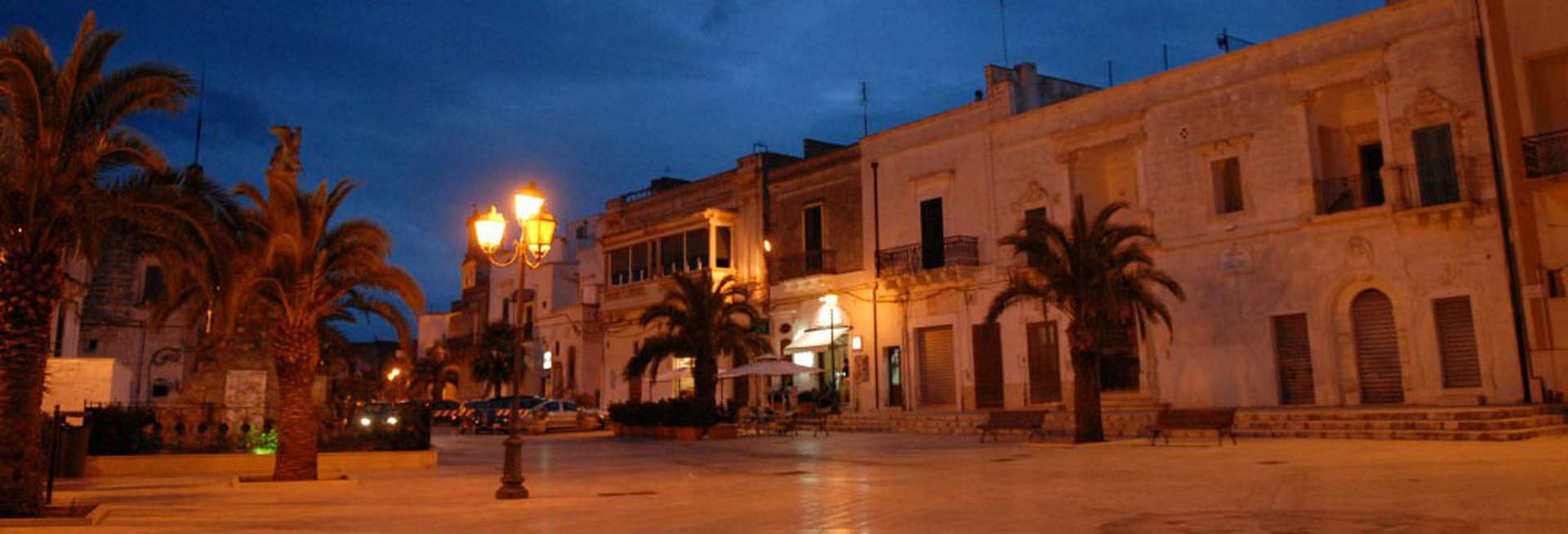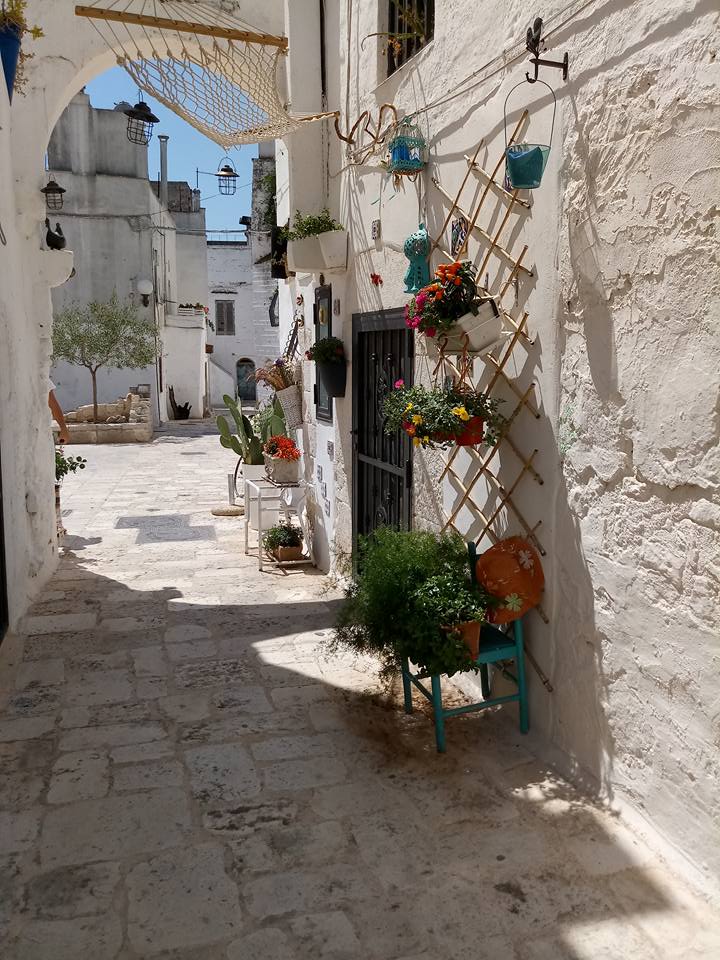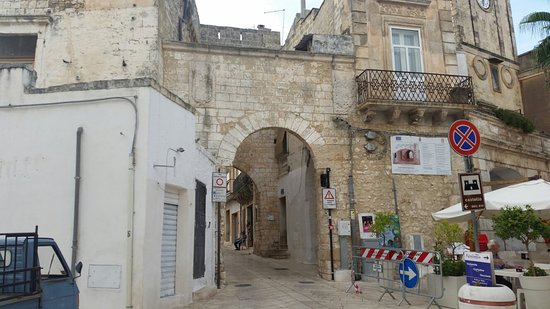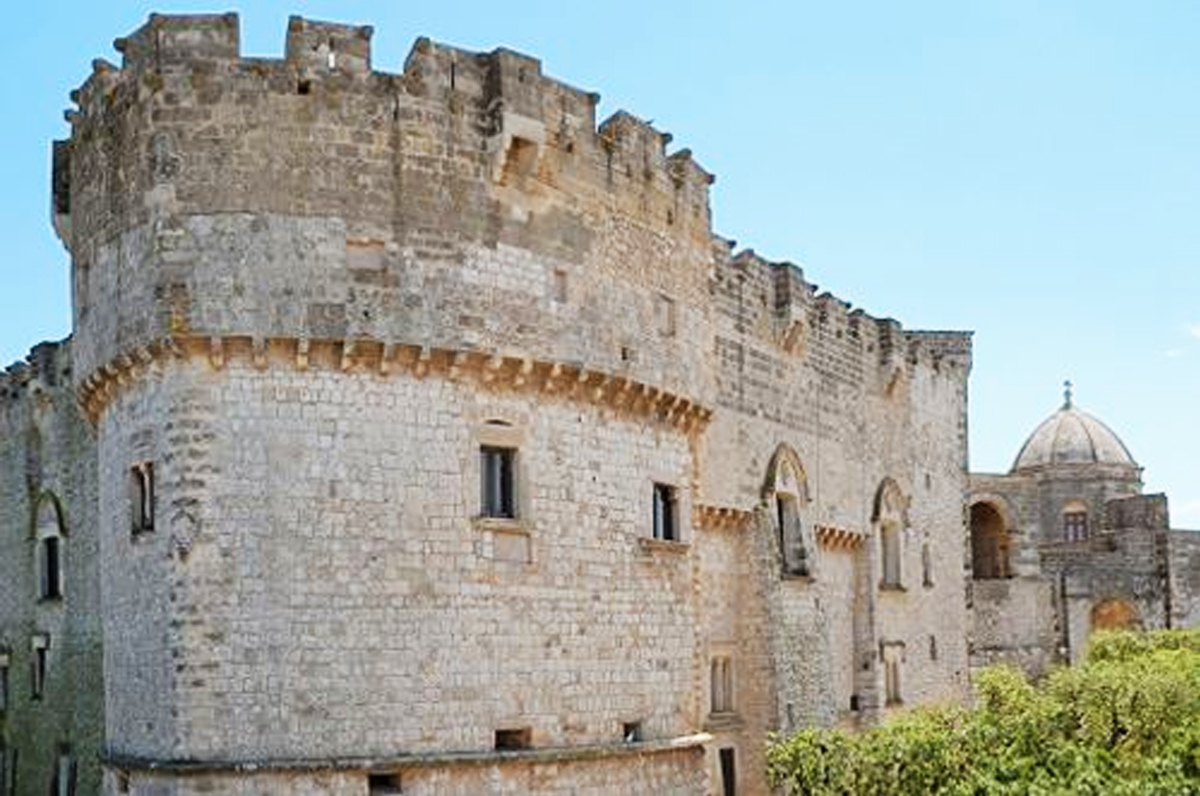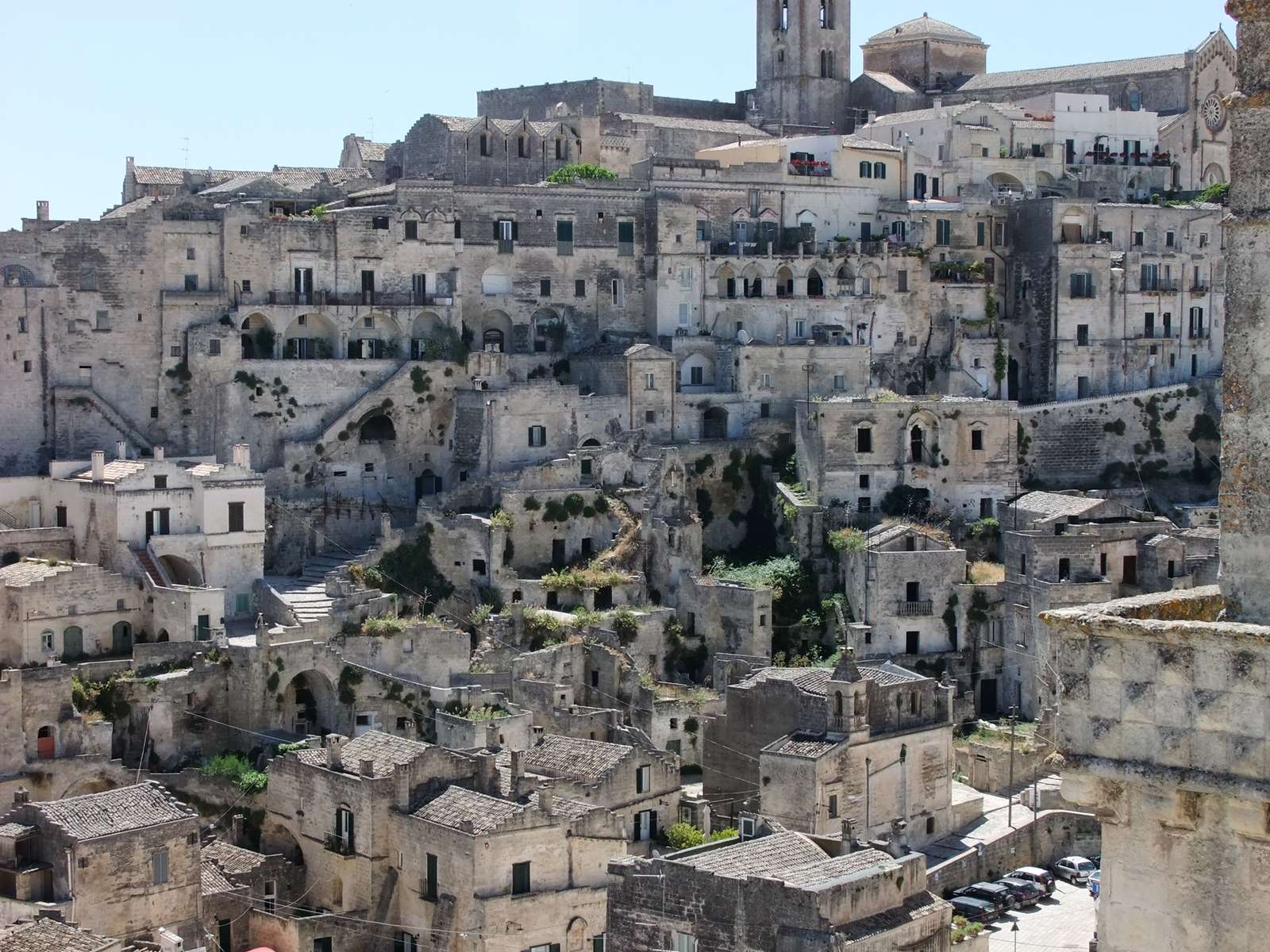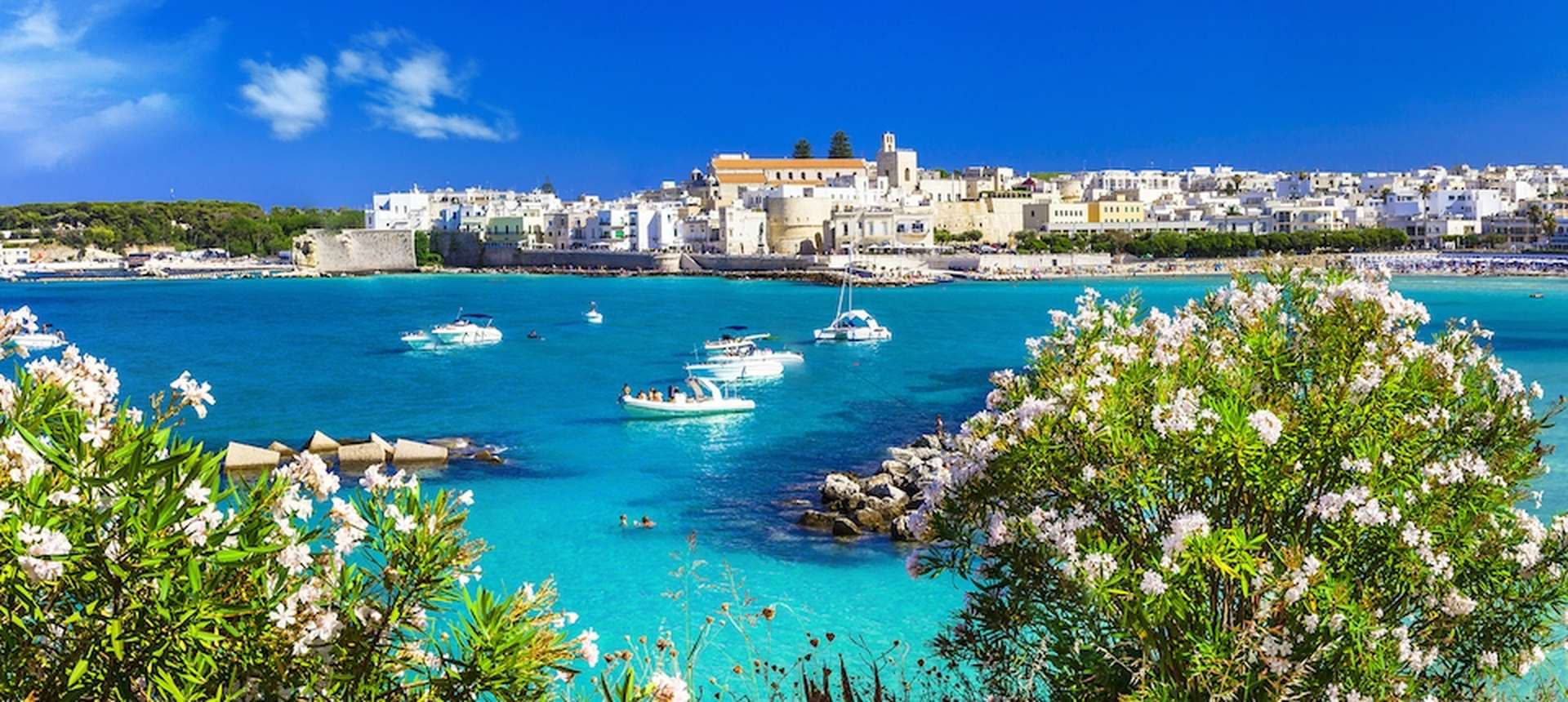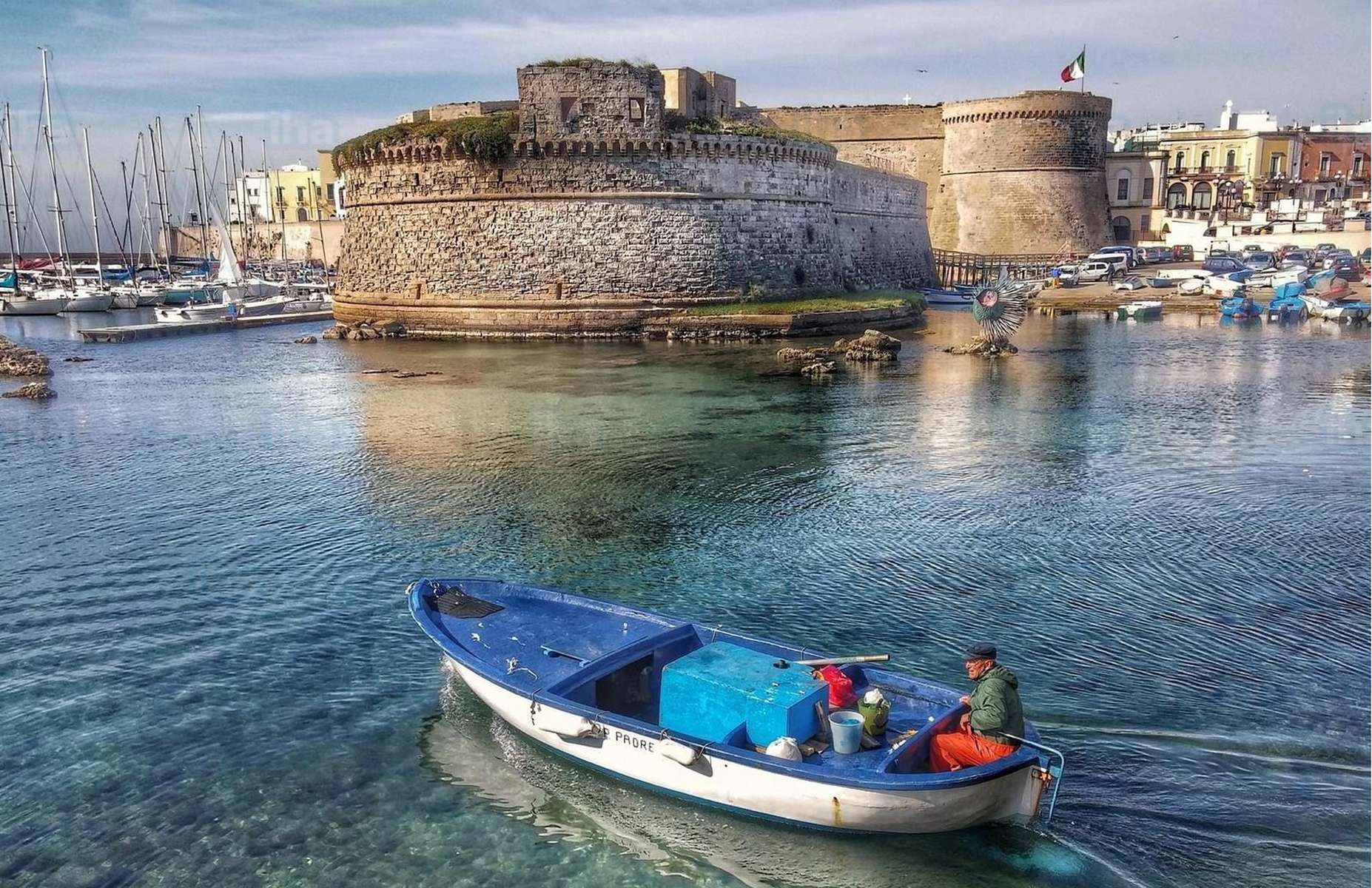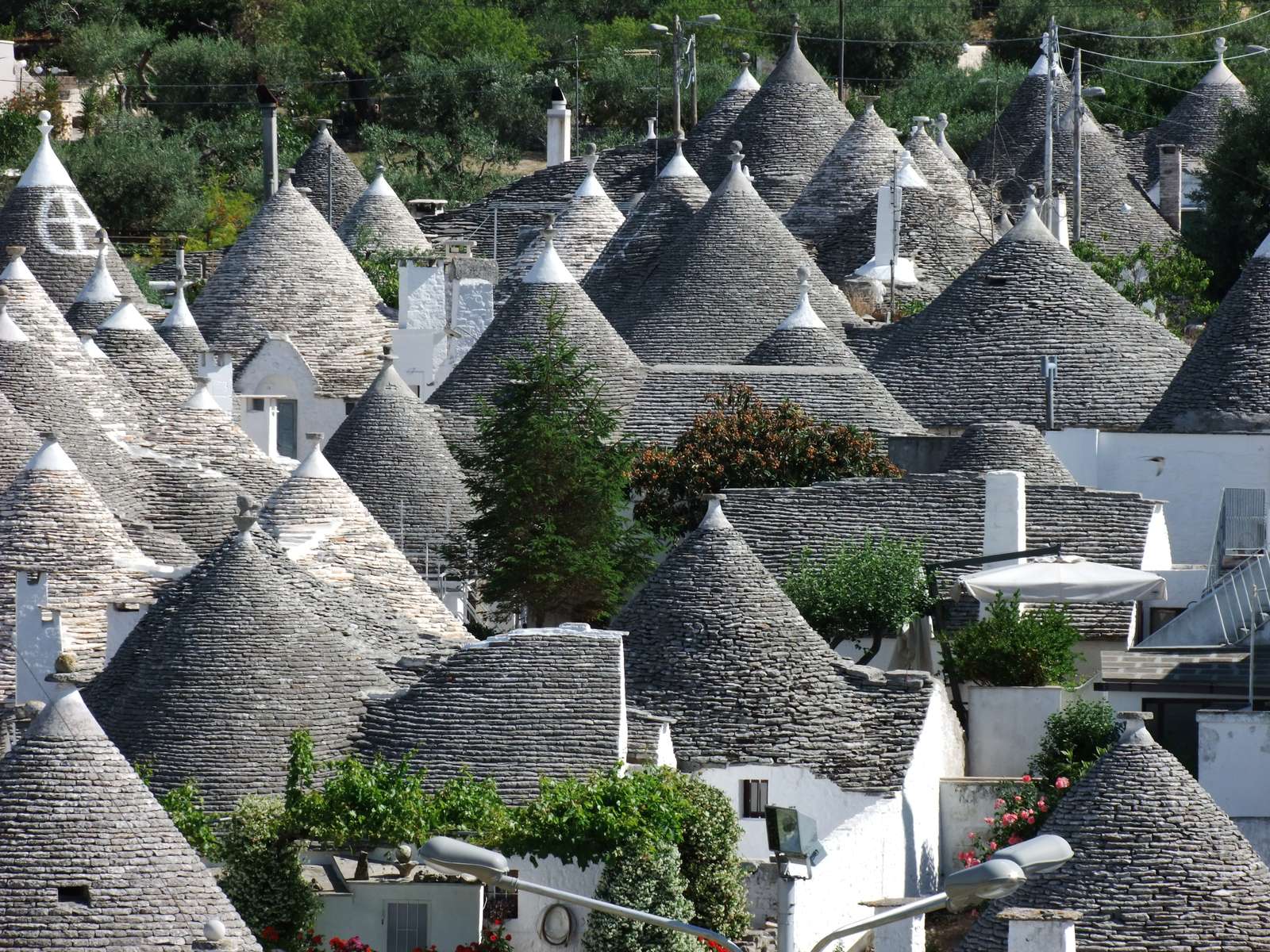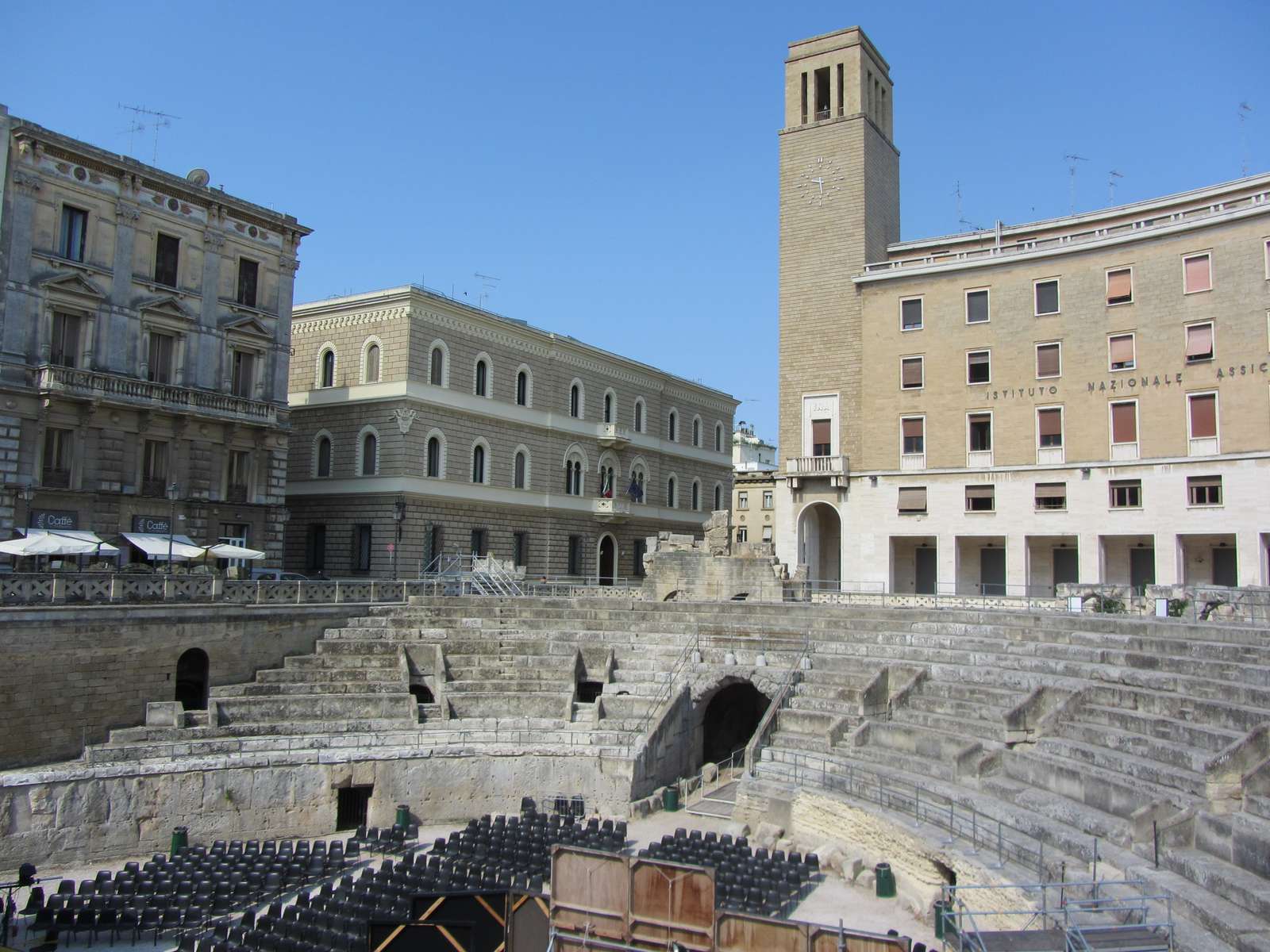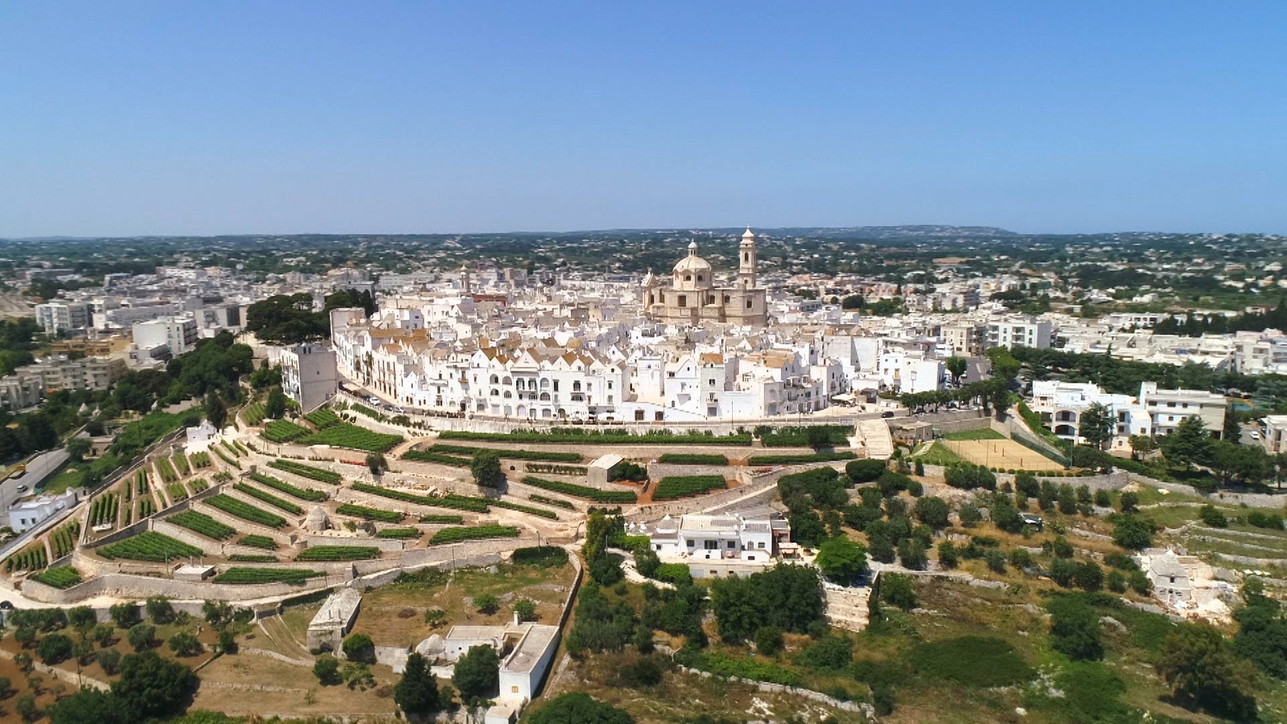20 minutes from Trullo della Pace
Carovigno stands on a fortified hill with megalithic walls, which currently forms a large part of the medieval quarter.
It was inhabited since the early Stone Age and there are, in fact, many interesting items of the Paleolithic and Neolithic and testimonies of human settlements.
What to visit:
DENTICE DI FRASSO CASTLE
Carovigno Castle stands on the highest point of the village.
The structure, which was built at the end of the 12th century as a military fortress, underwent many modifications until it became a noble residence during the 18th century.
Along the Castle is the Church of St. Anna, which was built by the Imperial family in the 18th century and served as a private chapel.
The choice of location was due to logistical needs, as strategically better suited to the defense: from the top of the towers it dominates the whole coastline from Torre Canne to Brindisi.
The first floor of the Carovigno Castle has been left as equipped as in the past, from the bedrooms to the main saloon with an elegant fireplace.
It remains associated with the proprietary of Dentice di Frassino family since the end of the 18th century.
Along the Castle is the Church of St. Anna, which was built by the Imperial family in the 18th century and served as a private chapel.
Thanks to volunteers, it is possible to visit the castle at predetermined times, and, on reservation, also add guided tours in the historic center of Carovigno, the so-called “Land Rione”, and in some of the oldest churches in the village.
For information and reservations
Castle visit: Tel. 0831 997213
Guided tours: Tel. 320.9653918
E-mail: scv_carovigno@libero.it
Church of Carmine
Built in 1625, it was initially built as a residence for the “Padri Carmelitani” in the process of moving from the Relief Convent.
The church later called Carmine was outside the walls of the city and for water supplies it could take advantage of a small groove on the terrace.
At the entrance you can still see the original portal dating to the first half of the eighteenth century, probably built by the same Padri Carmelitani.
Inside, however, eight chapels are painted and distributed along the nave of the Church of Carmine.
There are also several canvases, the most valuable of which are the St. Anthony of Padua and a St. Michael Archangel and a Holy Family of unknown signatures.
Madonna del Belvedere Sanctuary
About 3 kilometers from Carovigno, nestled in the green of the Itria Valley, the Sanctuary of Our Lady of the Belvedere lies at about 100 meters altitude, a sixteenth-century outpost of an extraordinary system of natural caves once inhabited by Basilian monks.
Built after the find of the icon of the Virgin, the Sanctuary was rebuilt in neoclassical style, and inside it a 47-steps staircase leads to the upper crypt, adorned with the 16th-century frescoes of Our Lady.
Going down again, you come to the lower crypt with the 14th-century frescoes in Sienese Gothic style, and the second fresco, ornamented by the baroque altar.
The Sanctuary is the final stage of the “nzegna” procession, an acrobatic choreography of flags and flags, celebrated on Mondays, Tuesdays and Saturdays after Easter.
The game is a commemoration of the find of the Virgin icon and symbolizes the waving of the colored handkerchief that a young pastor waved for joy.
Link Tripadvisor – Santuario Madonna Belvedere
Serranova Castle
About 9 kilometers from Carovigno, there is a small hamlet, Serranova.
It has overlooked, for a long time, a fortified farm that became a castle through the restructurings done by the various lords until the last to come, the prince Dentice di Grasso, who made his summer residence.
The construction of the castle of Serranova, then restructured by the feudalist Ottavio Serra in 1629, dates back to 1350.
For information on visits, call:
- Tourist Office of Carovigno – Tel. 0831.997213
- Pro Loco of Carovigno – Tel./Fax 0831.991900
Castello di Serranova – Link to additional info
Torre Santa Sabina
Torre Santa Sabina is a coastal town belonging to the municipality of Carovigno (about 3 km) and was an ancient port used as a port that was to have some relevance due to the stone quarry in the area, an important material for the trades of the time .
Almost certain that the site in the past was hit by two tsunami between the XVII and the XVIII century.
Today, however, it is mainly a seaside resort with its beaches.
This place takes its name from the sixteenth-century tower with the same name.
The tower has the shape of a star with the edges oriented towards the cardinal points.
The territory of Torre Santa Sabina has been visited since the Bronze Age, the inlet on which it insisted was the port of the ancient messapic city of Carbina, all confirmed by the many finds found on the backdrops.
There are a number of hotels and resorts and the beaches are served by well-equipped bathing establishments.
The most popular beaches are:
La Gola, with high and steep cliffs, is the ideal place for those who do not prefer sand and crowded places.
Camerini is the beach of Torre Santa Sabina, is very wide and the sandy bottom is low, it is ideal for families with children.
The Horse’s Beach takes its name from a rock in front of the same that recalls the animal;
Lastly there is the Mezzaluna beach, which is named after its particular shape, also this is a sandy thing that makes access to the sea simple for everyone.
At the end of the beach there is an archaeological area consisting of fossil dunes and caves used during the Neolithic.
PROBABLY YOU DON’T KNOW: THE LEGEND OF “NZEGNA”
It is a popular and religious festival linked to the worship of Our Lady Madonna del Belvedere.
The legend tells about the finding of the Madonna image on a cave, inspired by a lord of Conversano who, seriously ill, dreamed in a vision of “a matron dressed of stars ” inviting him to go to Carovigno in a cave of the Belvedere district to find his image.
The gentleman, being unable to move, prayed to his cowhand to go to the place indicated to search the precious canvas.
After a long and unsuccessful search, the cowhand was about to return when he realized he had lost a heifer.
Concerned, he began to make the journey back to that point and, after a while, he saw a cave that he did not remember visiting.
Driven by curiosity, he crossed the entrance and, with great amazement, saw the heifer who believed lost, “knees” inside the cave, in front of the painting of Our Lady.
The cowhand, taken by great emotion and immense joy, launched his walking stick to which he tied a handkerchief of various colors to attract the attention of neighboring and to communicate to them the miracle which he was witnessed.
Other sources, this time scientific, show that the painting of Our Lady of Belvedere is of Byzantine origin, realized by Christians who, following the edict of 726 BC, emanated from the Emperor “Leone Isaurico Iconoclasta” against the cult of sacred images, refugees in the rock caves celebrated the religious functions venerating the pictures they painted themselves.
The flag of the “Nzegna”, or “Marian sign”, of square shape with triangular drawings of various colors, brings to the center the Byzantine mystical rose associated with the image of the Virgin.
